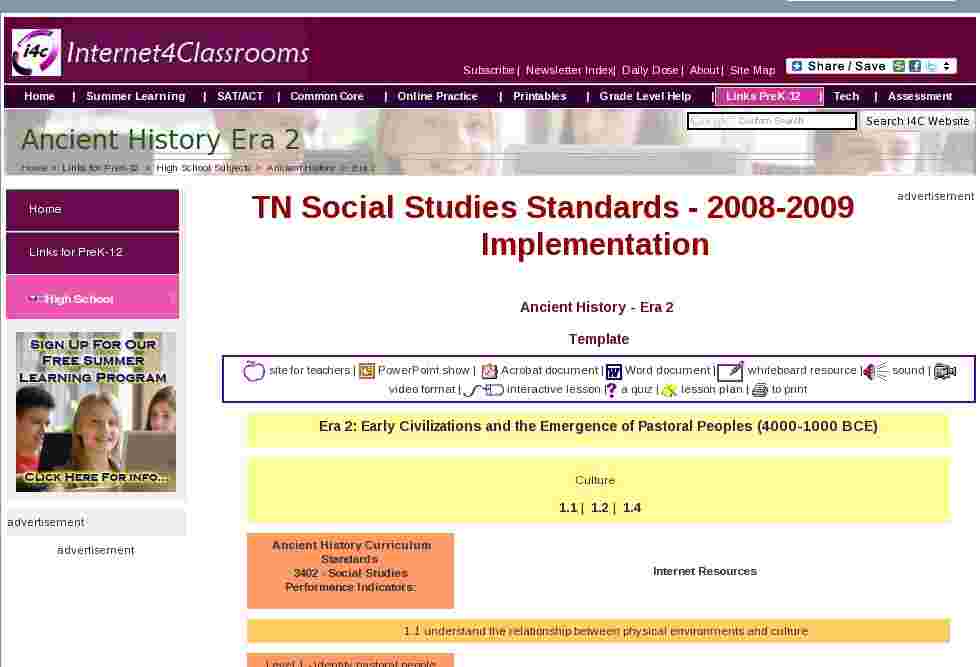advertisement
TN Social Studies Standards - 2008-2009 Implementation
Ancient History - Era 2
Template
site for teachers |
PowerPoint show |
Acrobat document |
Word document |
whiteboard resource |
sound |
video format |
interactive lesson |
a quiz |
lesson plan |
to print
Era 2: Early Civilizations and the Emergence of Pastoral Peoples (4000-1000 BCE)
Ancient History Curriculum Standards
3402 - Social Studies
Performance Indicators:
Ancient History Curriculum Standards
3402 - Social Studies
Performance Indicators:
Ancient History Curriculum Standards
3402 - Social Studies
Performance Indicators:
Ancient History Curriculum Standards
3402 - Social Studies
Performance Indicators:
Ancient History Curriculum Standards
3402 - Social Studies
Performance Indicators:
6.1Ancient History Curriculum Standards
3402 - Social Studies
Performance Indicators:
Search Internet4Classrooms
 Custom Search
Custom Search
- Site Map |
- About Us |
- Teacher Training |
- Make Internet4Classrooms.com your home page. |
- Copyright © 2000-2024 Internet4Classrooms, LLC All rights reserved.
Use of this Web site constitutes acceptance of our Terms of Service and Privacy Policy.
1743397979525699 US 5 desktop not tablet not iPad device-width